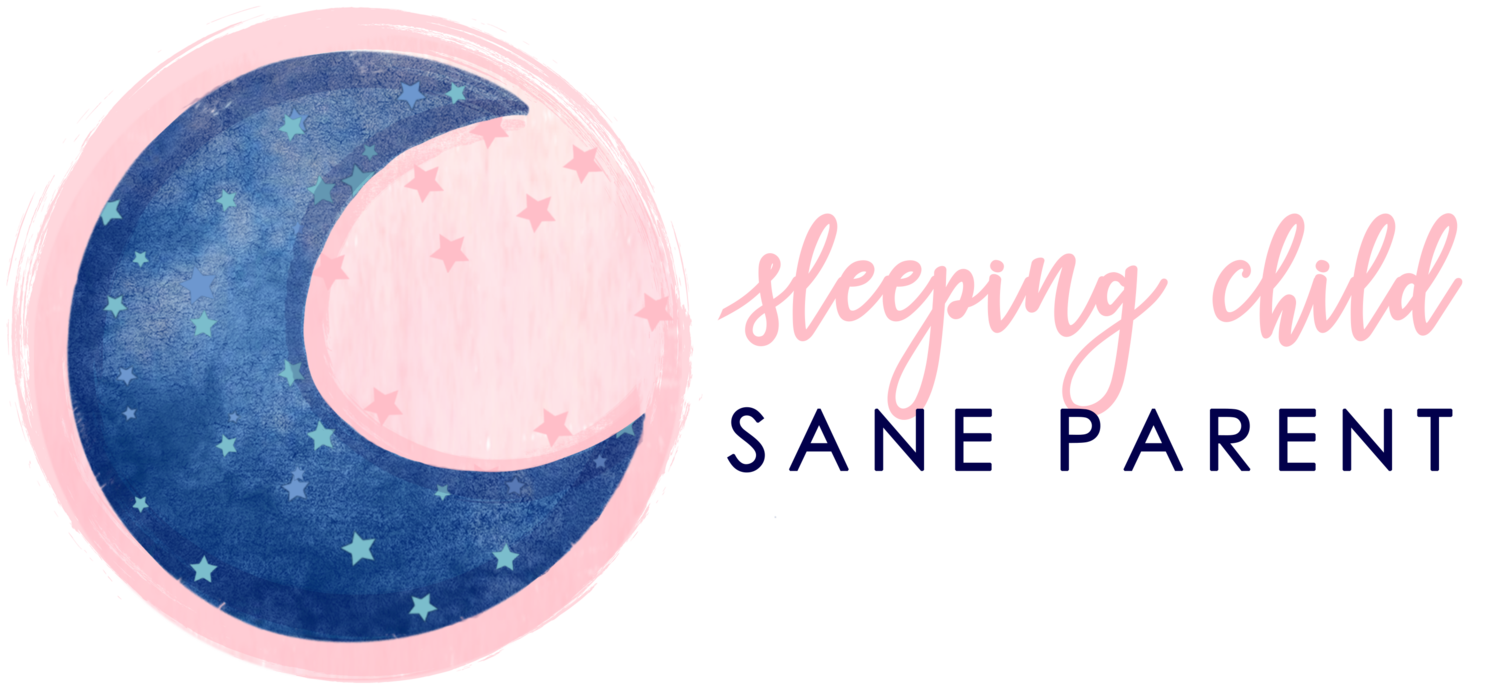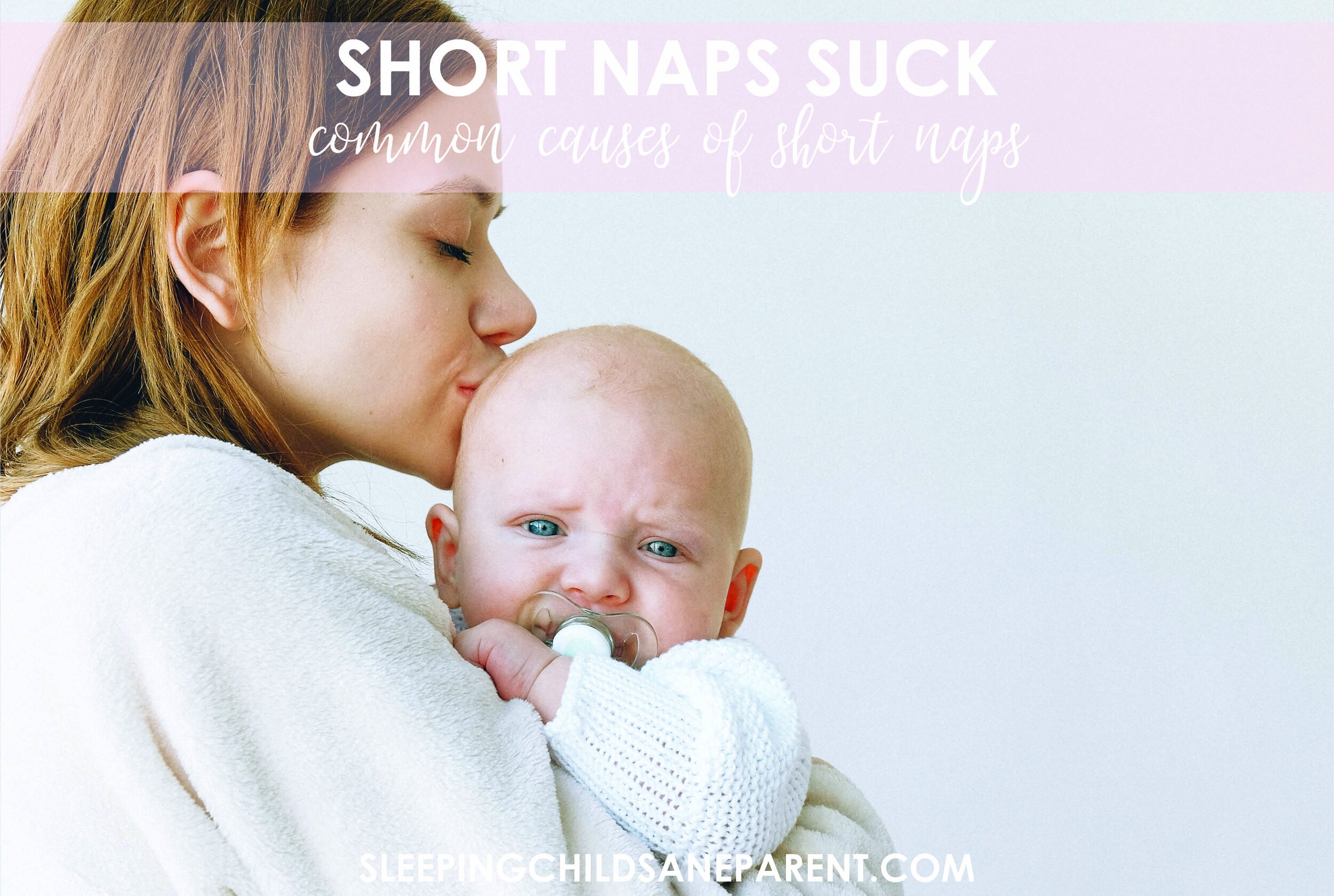If you’re new around here, you might not know that short naps were MY original sleep problem that led me on the path to becoming a sleep consultant.
I figured out on my own how to teach my first daughter, Ada, to fall asleep independently and sleep through the night before she was four months old, but no matter what I tried, I couldn’t figure out how to get her consistently napping longer than 33 minutes! People always liked to say, “Well at least she’s sleeping through the night!” And while I was grateful for that, it didn’t negate the fact that Ada took crap naps, and crap naps suck!
If your kiddo is struggling with short naps, I FEEL YOU, GIRL! It is NOT a fun problem to have, so let’s get into what might be causing those short naps!
Age
Short naps are extremely common for young babies, and while I do believe there’s a lot we can do to extend a newborn’s naps, sometimes it’s just not in the cards! Naps become more mature starting around 4 months, and for some babies, things don’t improve until closer to 6 months. Do all you can to extend short naps (for Baby’s sake and for yours!), but also have biologically realistic expectations. (Personally, I rely heavily on binky replacement to extend naps during the newborn stage!)
Sunlight
After Baby has fully sorted out her days and nights (around 6 weeks), I recommend napping Baby in a pitch black room. Darkness is important for helping Baby produce melatonin (the sleepy hormone) and get higher quality sleep. It’s also key to nap success! If Baby wakes after a short nap and can see her surroundings, she’s much less likely to return to sleep — she’s gotten enough sleep that her room can now seem delightfully distracting. So if Baby’s room isn’t BLACK BLACK BLACK, definitely fix that. Check out all my favorite blackout solutions.
Sleep Associations
However Baby falls asleep initially is what Baby will need in order to return to sleep after waking from a short nap. If she falls asleep in Mom’s arms but wakes up in her crib, she’ll be confused and upset, and she’ll let you know that! Baby has to fall asleep all by herself in her own sleep space in order to return to sleep all by herself.
Lack of Opportunity to Try
If Baby is old enough, the room is dark enough, and Baby falls asleep on her own, she may just need more opportunity to practice falling back asleep! If she wakes after a 30-minute nap and you immediately go into her room to get her out of bed, she’ll have no chance to practice returning to sleep on her own. Wait at least 10 minutes after Baby appears to wake, because babies often cry out in their sleep or wake briefly before returning to sleep. But better yet, use Crib 60!
Schedule is Off
And finally, if all of the above issues are taken care of, then the short-nap problem is most likely due to Baby’s nap schedule. Unfortunately, this is the most tricky one to fix. If Baby is undertired when she goes to sleep, she’ll most likely take a short nap. If Baby is overtired when she goes to sleep, she’ll most likely take a short nap. If Baby’s schedule changes every day because you’re trying to fix the short naps, the short naps will persist because of a lack of consistency. You can see how it becomes very confusing!
Grab my free Ideal Schedule guide to get an idea of what timing I recommend for different ages. Then, if you’re still having trouble getting longer naps, reach out to me! I’d love to help you get your child the sleep he or she needs!
Short naps aren’t fun for anyone, so pinpoint which area (or areas!) you might need to modify lengthen your child’s naps! Those wonderful 60+ minute naps are within your reach!


